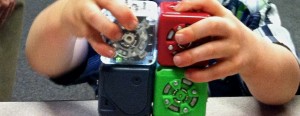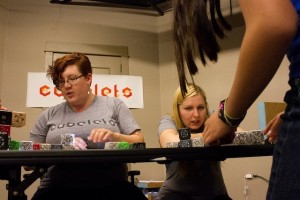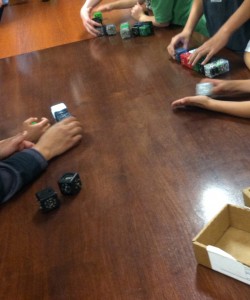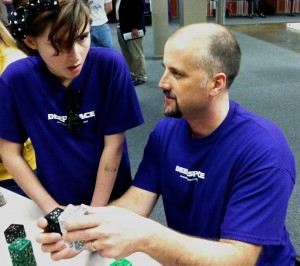What does deep space have to do with Cubelets? I have both funny and serious answers to that question.
Serious first: Someday I hope to see students at camps thinking about NASA, space ventures to Mars and beyond, astro-biology, and robotics using Cubelets. It goes without saying that I wouldn’t be working here if I didn’t have an almost religious belief in the importance of all students understanding the principles of science. But I have maybe even a stronger desire for all students to appreciate and experience that amazing undertakings are achieved in little steps. Moreover, the greatest feats are accomplished and accumulate most appreciably when teams of dedicated people bring the full weight of their technical expertise, skills and knowledge, and personality to bear on a team. Sometimes I explain Cubelets robots to young children this way – that each function contributes its work to a larger process and becomes part of a “team” that makes a robot. But, if we’re really talking about huge, massive, previously unthinkable accomplishments it would be almost insulting not to mention Curiosity because nothing beats a seriously cool robot landing on Mars or seeing a room full of engineers celebrate years of work coming to fruition. Plus, in case you missed it, one of those engineers is now immortalized as “Mohawk Guy.” Rad.
Now for the less-than-serious: I’m one of the older people here at Modular Robotics and grew up on The Muppets. I really can’t hear the word “space” and not also think “Pigs in.” It was epic, and always one of my favorite segments. Just that echoing voice saying it, “Piiiiigggs Iiiinnn Spaay-yaaccee.” Yes.
So, when we began discussing a collaboration with a business owner who told us his venture was called Deep Space Parker I was a more than a little intrigued. Over the weeks of talking to Deep Space Parker’s founder, Brian, we’ve become good friends and we consider him a great example of a non-traditional educator. As in, he may not have a degree in education or lead a classroom of 2nd graders but that’s not stopping him from wanting to contribute to the local education scene. When he invited us to not only exhibit but to teach a short robot class, of course the answer was yes!
In addition to seeing our good friends and early-adopters of Cubelets, Ameribotics, we also got a chance to interact with other tech and robotics programs for kids including Sharc and FIRST Robotics as well as several others. It’s great to be part of such an esteemed group, but for me the real motivation to do events like this is to put Cubelets into the hands of kids and educators. The best moments are when a child first hooks up a Battery, Sense, and action Cube and they make the classic Oh-My-GOODNESS face of joy and awe as they see they’ve created a robot that does something cool. This moment is always so brief as kids then get down to business – once they’ve made one robot that works they set themselves very quickly to the task of making more, bigger, and more sophisticated robots!
One of the things that’s so great about building robots with Cubelets is that it’s so scalable. Little roboticists, like this 3 year-old, can get a handle on building simple, yet incredibly satisfying, robots.
At the same time a middle-schooler at our table can be considering what it means to have a robot with multiple senses and multiple actions.
Exhibiting is fun, especially when you’re working with fun team mates
But I was especially psyched to teach a short robotics workshop for parents and kids to build robots together.
One of the things I love most about the kinds of learning Cubelets robots lends itself to is that parents and kids start out on an equal footing. It’s an awesome feeling to see parents and kids trying ideas together, testing out a theory, making joint design decisions, and teaching each other as they figure out the sense-think-act relationships they’re building.
One of the better moments of the night was when Deep Space Founder, Brian, took some time out from his evening to come and play at our table. He brought along a Cubelets expert, his daughter. She got him up to speed quickly, and then he asked me for some challenges. He and his daughter worked really hard to understand how to best use the Think blocks in their joint robot build.
I left them with a challenge and Brian has been emailing me with updates ever since then. Cubelets on the brain, as well as in Deep Space then!
I’m looking forward to seeing how Brian and Deep Space move forward with creating a multi-use space for office-share during the day and a space for after-school programs and events at night. Thanks for having us!






